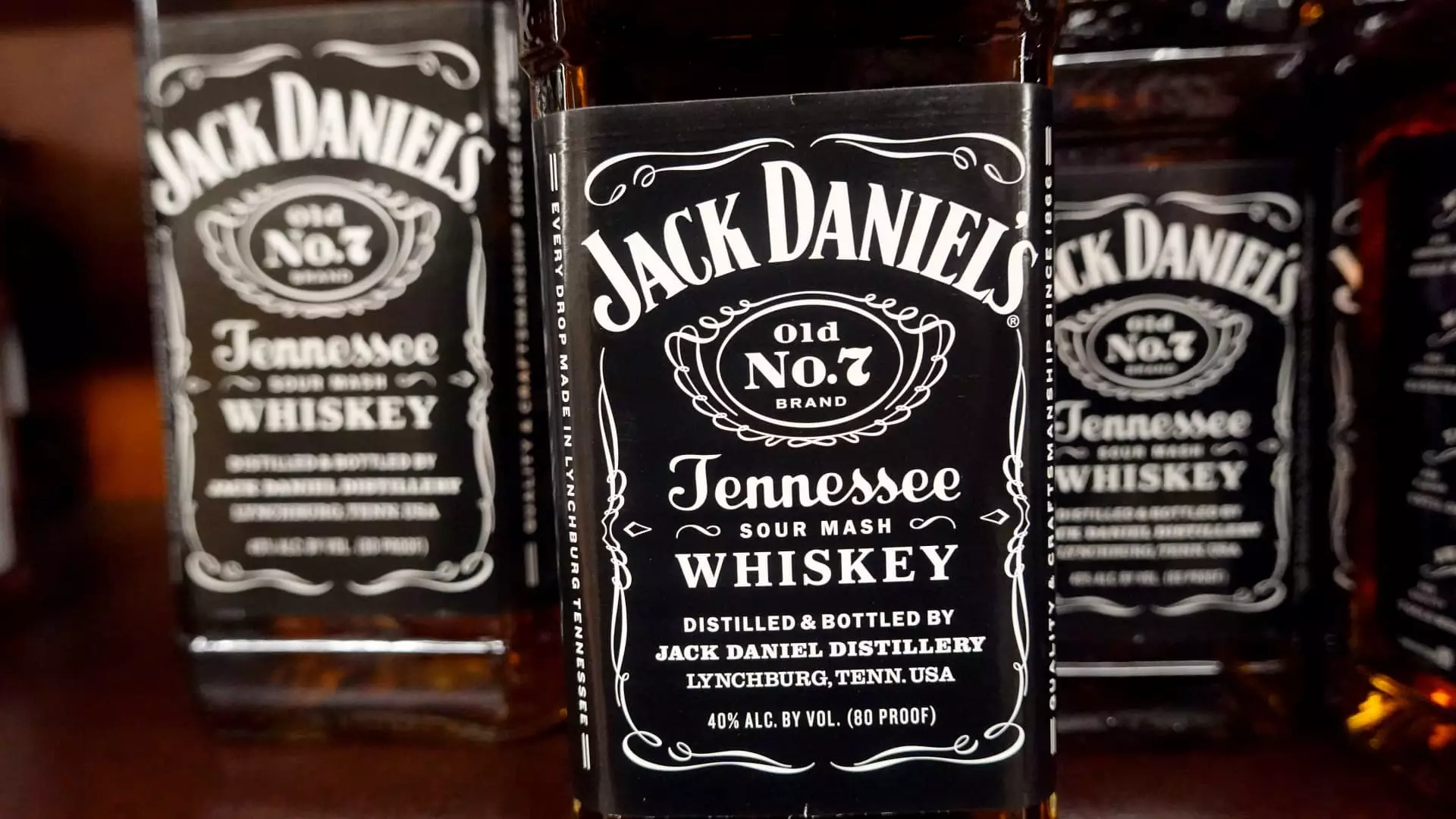In a disheartening turn of events, shares of Brown-Forman, the esteemed producer of Jack Daniel’s whiskey, saw a staggering 18% drop following the company’s recent earnings report. The fiscal fourth quarter figures were troubling: revenue of $894 million and earnings per share of 31 cents fell short of Wall Street expectations of $967.4 million and 34 cents, respectively. It’s a stark reminder of the vulnerabilities lurking in companies traditionally viewed as cornerstones of resilience in the beverage industry, particularly in a volatile macroeconomic landscape marked by changing consumer habits and disruptive tariffs.
CEO Lawson Whiting’s statement echoed a familiar refrain in corporate America: “We made important progress in an exceptionally challenging macroeconomic environment.” Yet, one cannot help but wonder whether such optimistic rhetoric glosses over the stark reality of the company’s performance. A 45% decrease in net income compared to the year prior raises serious questions about the effectiveness of their strategic decision-making. Are they really making progress, or are they merely scrambling to keep afloat in an increasingly turbulent sea?
The Tariff Trap
Tariffs have placed a stranglehold on Brown-Forman’s potential growth and profitability. While the company attempts to navigate these troubled waters, estimates from Bernstein reveal the underlying fear: a 50% tariff on U.S. whiskey sold in the EU could obliterate 10% from Brown-Forman’s operating income. This not only reflects a critical vulnerability but also points to a broader trend affecting American spirits. The ramifications are not only felt in boardrooms but on the shelves of liquor stores across the continent—as evidenced by Canadian shops pulling Jack Daniel’s products in response to damaging policies.
Whiting’s assertion that these removals are “worse than a tariff” encapsulates the ongoing struggle for brand loyalty amidst rising costs and consumer resistance. This is not just a numbers game; it is a question of brand identity in an era when consumer sentiment is shifting, and discretionary spending in the alcohol sector is faltering. As consumers tighten their belts, whiskey could easily be seen as an unnecessary luxury.
The Broader Landscape
In this context of economic uncertainty, it is essential to consider how Brown-Forman fits within the wider market. The company’s efforts to diversify its product range with tequila and ready-to-drink beverages have faltered, with declines of 14% and 6%, respectively. As their traditional products remain stagnant, the landscape becomes increasingly unwelcoming. Analysts have pointed out that distillers like Brown-Forman typically lag behind brewers during recessions, placing them at a strategic disadvantage against more agile competitors such as Constellation Brands and Anheuser-Busch.
The real kicker? Brown-Forman anticipates further single-digit declines in both organic net sales and operating income for the fiscal year 2026. With mounting pressure from both economic and geopolitical fronts, the company’s outlook seems grim. It begs the question: How can a robust brand like Jack Daniel’s, with its storied legacy and loyal fanbase, face such operational hurdles? What steps are being taken to bolster growth and safeguard against external shocks?
In a market increasingly hostile to old guard brands, the urgent need for innovation and an adaptable strategy has never been clearer. While Brown-Forman has navigated its fair share of challenges, the current outlook could mark a turning point—one that requires swift action and transformative thinking to reclaim its position and ensure future resilience.

